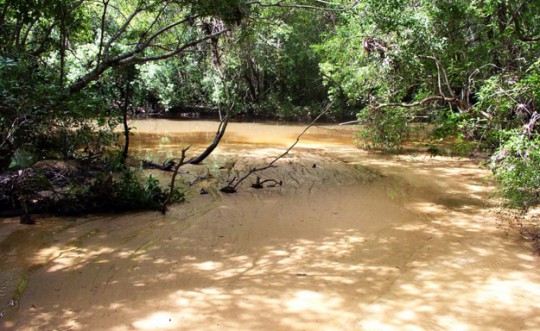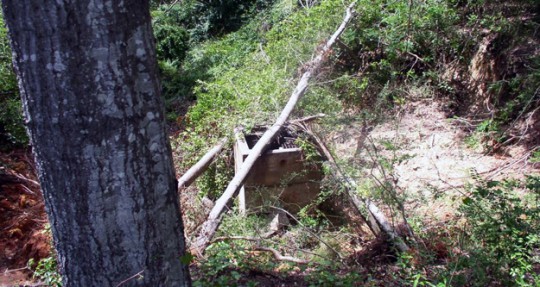Emergency Program Flood Repairs Begin At UWF
July 24, 2014
The University of West Florida did not escape the April 30th flood unscathed, and workers will began to make repairs Thursday in hopes of completion before school starts next month.
Just 15 feet west of the heavily-traveled four-lane Campus Drive that loops through the college campus and across from the intramural fields, the storm gouged out a gully 300-feet long and 20-feet deep. The unstable gully slopes are toppling trees on two sides and threatening to collapse the roadway, the adjacent student parking lot and take out a stormwater outlet that drains runoff from the campus grounds into a 50-acre area. A natural gas main has been exposed and sediment accumulating at the bottom of the gully is discharging into Thompson Bayou and subsequently into Escambia Bay.
The University of West Florida contacted USDA’s Natural Resources Conservation Service for financial assistance through the Emergency Watershed Protection Program to repair the damages and prevent the road from failing. NRCS will provide 75 percent of the estimated $700,000 to install a structure to convey the stormwater runoff to a safe outlet and stabilize the gully embankments to protect the road and stop the erosion. Officials expect to complete the work by August 26.
The Emergency Watershed Protection Program alleviates hazards to life and property caused by floods, fires, windstorms and other natural occurrences. Public and private landowners are eligible for assistance, but must be represented by a project sponsor, such as a city, county, conservation district or any Native American tribe or tribal organization.
“The University of West Florida has worked with NRCS in the past. The financial assistance from the Emergency Watershed Program and the expertise of the NRCS engineering staff has allowed us to do quality rehabilitation at these sites that will last for many years,” said Ron Northrup, UWF facility engineer.
Pictured top: Sediment at a bottom of a flood-created gulley on the UWF campus is making its way into Thompson Bayou and eventually Escambia Bay. Pictured below: The side slope of the gully continues to erode. Photos courtesy USDA for NorthEscambia.com, click to enlarge.





Comments